16 Judy Watson’s ‘a preponderance of aboriginal blood’
Cath Thompson
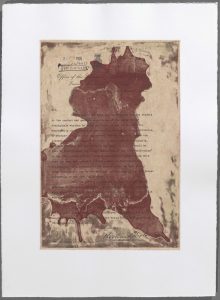
Terra nullius determined from the beginning that there was never going to be a level playing field. Firstly, to not even be recognised as human beings and then to be split up and placed in a race classification system based on the preponderance of Aboriginal blood is abominable.
No wonder Waanyi artist (north-west Queensland) Judy Watson felt compelled to produce this thought-provoking etching collection based on abhorrent pieces of shameful historical documents.
Judy’s work reflects a time when Queenslanders were marking the centenary of women’s suffrage, yet it took another 60 odd years for the playing field to be levelled for Aboriginal and Torres Strait Islander people in terms of voting rights in Australia.
Why is it that justice for Aboriginal and Torres Strait Islander peoples still takes so long?
Looking at the Constable’s letter to the Director of Native Affairs (1842) in this collection makes my blood boil.
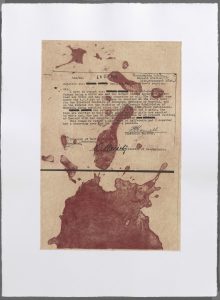
He signs the letter off as ‘Protector of Aboriginals’, justifying that the ‘half-caste widow’ is worthy of the widow’s pension because she is ‘rather a fine type of half-caste’ and her girls had married white men, as though that makes her more worthy, more white. In my mind, the woman is also questionably being portrayed as hopeless since he notes she is illiterate. How is he protecting Aboriginal people when he writes these words? To him, the widow is not a woman, not an Aboriginal person, nor a human being. She has been defined by blood quantum.
As Anita Heiss explains in her book, Am I Black Enough for You?, the caste system (‘full-blood’, ‘half-caste’, ‘quarter-caste’ and ‘quadroon’) was used as a means of watering down and eliminating Aboriginal peoples in Australia. This mentality still exists today where Aboriginal people are judged by the colour of their skin, their ‘blackness’, so no wonder Aboriginal people continue this fight today.
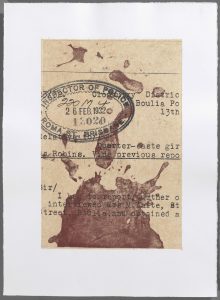
I look at this collection and although Judy has used red ink stains to symbolise blood, I don’t see red ink, I see blood. Blood is blood. Do you look at blood and ask whether it is full blood or half blood – No! Blood is blood and my blood is boiling when I think that it could have been one of my ancestors that were responsible for the deplorable treatment and suffering of Aboriginal people.
Thank you, Judy Watson.
You showed me through these works the bloodshed, and the blood shed by Aboriginal peoples. Your work has given me a deeper understanding of how discrimination against Aboriginal people, and the lack of respect for them, has been etched in history and how it continues today. This needs to change. I feel the pain.
The bleeding has to stop!
* * *
Link to the Fryer Library Collection
Watson, J. (Waanyi)(2005). A preponderance of aboriginal blood. Numero Uno Publications.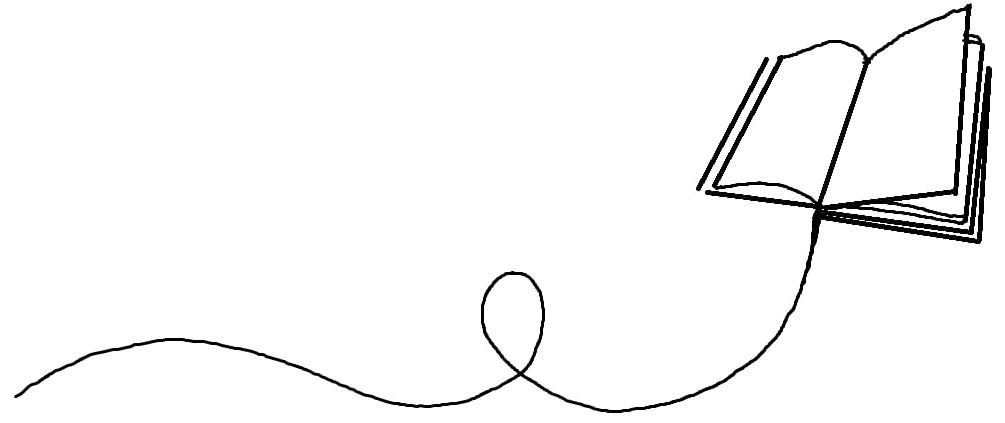
Biography
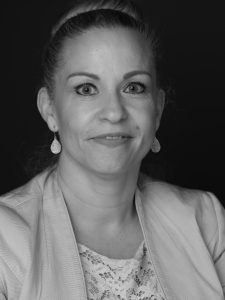
Cath Thompson is a non-Indigenous woman who has been privileged to work with some of the most deadly Indigenous women in Queensland. While employed at UQ, she worked closely with Professor Bronwyn Fredericks, Pro-Vice-Chancellor (Indigenous Engagement) as her Executive Assistant and Senior Administration Officer. Professor Fredericks has taught her so much about Indigenous knowledge, culture and shared so much more with her about her life. She has also worked closely with Professor Tracey Bunda, Chair, UQ-NAISA Conference Organising Committee, who taught her how to lead a working group, making it fun yet productive and who showed her a new way of opening meetings with a point of cultural significance. She has been graced by the pleasure of having been introduced to another inspirational deadly Indigenous woman by the name of Professor Anita Heiss who continues to share her passion for writing, and for educating young Indigenous students, winning an accolade of awards, and for sharing her positive outlook on life. Cath has had the fortunate opportunity to witness first hand the deadliness of Distinguished Professor Aileen Moreton-Robinson’s work around developing the ARC Indigenous Futures Centre at UQ, her amazing new work around Gender and Sovereignty on the Quandamooka Frontier and listening to her and Dr Jackie Huggins Talkin’ it up to the White Woman at Avid Reader. She dedicates this reflection to these awesome women, who have believed in her.

